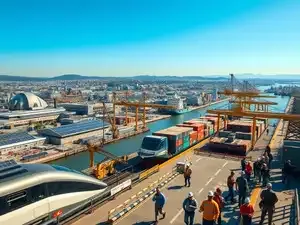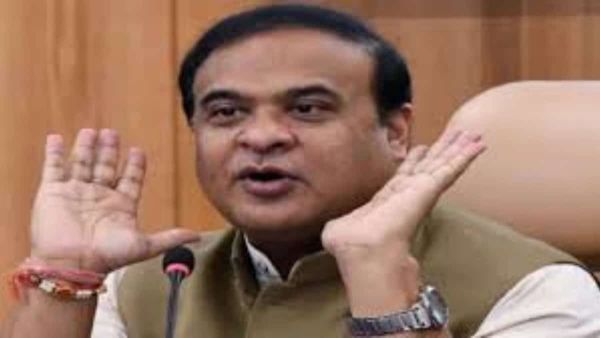India is considering lowering the barriers between its multiple dedicated export zones and the domestic market to allow freer flow of goods and services, seeking to boost both exports and manufacturing.
The measures are included in ongoing discussions between the Prime Minister’s Office (PMO) and the commerce and revenue departments on making the special economic zones (SEZs) more competitive in view of the global trade uncertainties.
The proposed measures would require a change to the SEZ framework that regulates the flows to and from these enclaves, first set up in 2000 as liberalized world-class manufacturing enclaves to boost exports.
The share of SEZs in total goods exports from India is about a fifth.
The measures being considered include rationalising customs duties on sale to the domestic tariff area, receiving payment for domestic services in Indian rupees, and allowing domestic units to send goods into these zones for outsourcing, people familiar with the matter told ET. “There are some issues that the SEZs face…These issues are being examined,” a government official told ET.
These are early discussions to understand what interventions can be carried out to ensure these zones and the units inside them achieve the scale as was envisaged when these were launched, said officials.
SEZs are essentially designated duty-free enclaves considered outside the customs territory of India, wherein units do not require import licences. Domestic sales are subject to full customs duty and the import policy in force. The attempt is to lift some curbs to create a bigger market by bringing down some barriers so that manufacturers can plan bigger units and achieve economies of scale. This may require changes to the SEZ Act of 2006, which sought to give focused attention to SEZs by carving out their regulation from the trade policy. In FY25, the industry exported ₹14.57 lakh crore worth of goods from the nearly 6,300 units in 276 operational SEZs, up 7.4% from a year earlier. Another official said that there is a need for the framework to be nimble enough to respond to challenges that businesses face, especially in the backdrop of an uncertain global environment. “Some measures are under consideration,” the second official said
“It’s about fundamentally shifting the focus from a purely export-centric model to one that promotes integrated 'Development Hubs'—balancing both international and domestic sales,” said Pratik Jain, partner, Price Waterhouse & Co LLP.
Jain said by easing customs norms, allowing domestic supplies to the SEZs on a duty foregone basis, and giving states a greater partnership role, India can revitalise these zones into true engines of job creation and next-generation manufacturing, like semiconductors and green energy, ensuring they remain relevant in the global supply chain. Industry has raised concerns earlier about how manufacturers within SEZs are at a relative disadvantage in comparison with those in countries with which India has Free Trade Agreements. “India’s SEZs need a structural reboot to restore export competitiveness. (It needs to) move swiftly to integrate SEZs with the domestic economy, while enabling digital clearances and reducing transaction costs,” said Ajay Sahai, director general, Federation of Indian Export Organisations.
The measures are included in ongoing discussions between the Prime Minister’s Office (PMO) and the commerce and revenue departments on making the special economic zones (SEZs) more competitive in view of the global trade uncertainties.
The proposed measures would require a change to the SEZ framework that regulates the flows to and from these enclaves, first set up in 2000 as liberalized world-class manufacturing enclaves to boost exports.
The share of SEZs in total goods exports from India is about a fifth.
The measures being considered include rationalising customs duties on sale to the domestic tariff area, receiving payment for domestic services in Indian rupees, and allowing domestic units to send goods into these zones for outsourcing, people familiar with the matter told ET. “There are some issues that the SEZs face…These issues are being examined,” a government official told ET.
These are early discussions to understand what interventions can be carried out to ensure these zones and the units inside them achieve the scale as was envisaged when these were launched, said officials.
SEZs are essentially designated duty-free enclaves considered outside the customs territory of India, wherein units do not require import licences. Domestic sales are subject to full customs duty and the import policy in force. The attempt is to lift some curbs to create a bigger market by bringing down some barriers so that manufacturers can plan bigger units and achieve economies of scale. This may require changes to the SEZ Act of 2006, which sought to give focused attention to SEZs by carving out their regulation from the trade policy. In FY25, the industry exported ₹14.57 lakh crore worth of goods from the nearly 6,300 units in 276 operational SEZs, up 7.4% from a year earlier. Another official said that there is a need for the framework to be nimble enough to respond to challenges that businesses face, especially in the backdrop of an uncertain global environment. “Some measures are under consideration,” the second official said
“It’s about fundamentally shifting the focus from a purely export-centric model to one that promotes integrated 'Development Hubs'—balancing both international and domestic sales,” said Pratik Jain, partner, Price Waterhouse & Co LLP.
Jain said by easing customs norms, allowing domestic supplies to the SEZs on a duty foregone basis, and giving states a greater partnership role, India can revitalise these zones into true engines of job creation and next-generation manufacturing, like semiconductors and green energy, ensuring they remain relevant in the global supply chain. Industry has raised concerns earlier about how manufacturers within SEZs are at a relative disadvantage in comparison with those in countries with which India has Free Trade Agreements. “India’s SEZs need a structural reboot to restore export competitiveness. (It needs to) move swiftly to integrate SEZs with the domestic economy, while enabling digital clearances and reducing transaction costs,” said Ajay Sahai, director general, Federation of Indian Export Organisations.
(This story has not been edited by economictimes.com and is auto–generated from a syndicated feed we subscribe to.)





